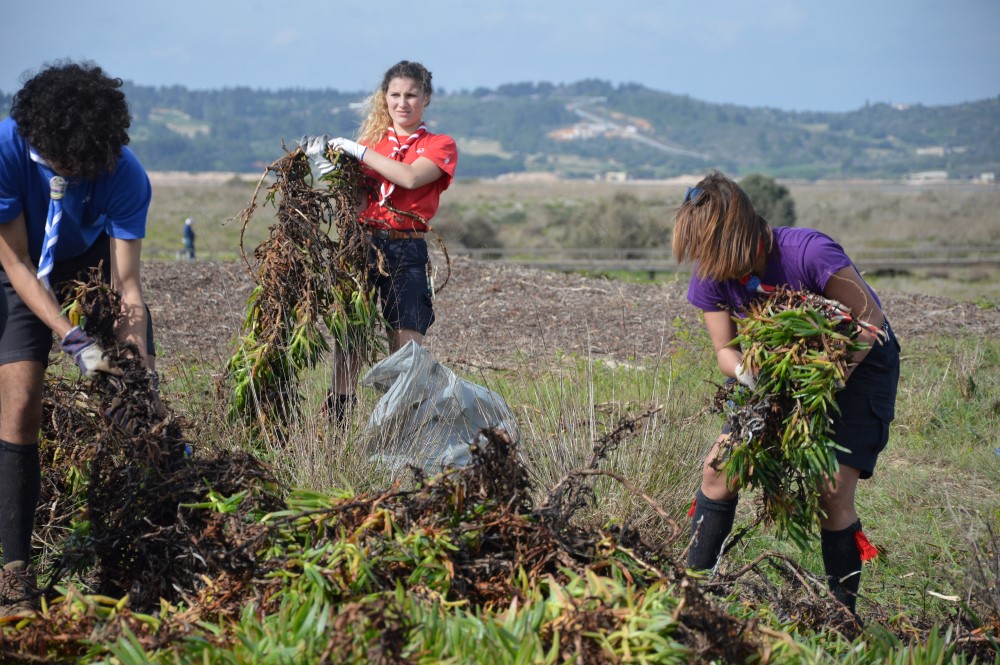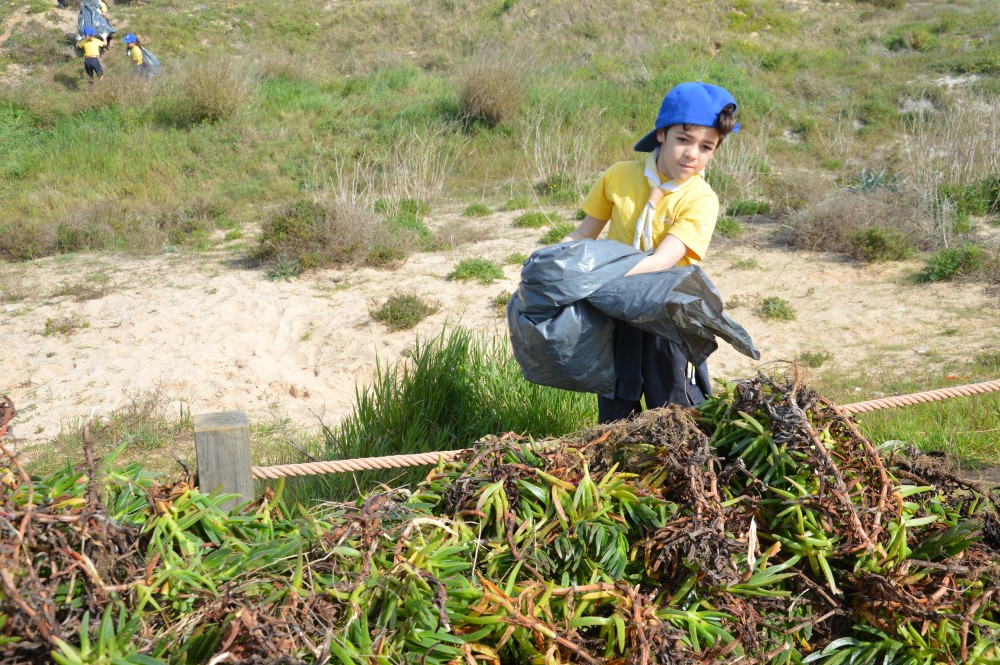 More than 300 children from the Bemposta Schools Group will participate again, tomorrow, February 2nd, World Wetlands Day, in an action to remove the “chorão das beaches” in favor of the Alvor dune system.
More than 300 children from the Bemposta Schools Group will participate again, tomorrow, February 2nd, World Wetlands Day, in an action to remove the “chorão das beaches” in favor of the Alvor dune system.
For the second consecutive year, to mark this date, the Municipality of Portimão once again challenged the Bemposta Schools Group to participate in a mega action to remove the “chorão-das-praias”, an exotic and infesting species found in the Alvor dune system , in order to preserve this wetland of international value.
At 9:30 am, next to the Alvor Sports Complex, more than 350 students and teachers from the 2nd and 3rd cycles of the Bemposta Schools Group have a meeting scheduled to, for about two hours, collect the greatest possible amount of “weeping beach” ” and “actively participate in this action to raise awareness of the problem of exotic species on native biological diversity and promote the values and functions of wetlands”.
Since, tomorrow, it will not be possible to remove all the stains from “Chorão-das-Praias”, on Saturday, February 17th, the entire population is challenged to also participate in this initiative to preserve the Alvor dune system .
Interested parties may join, this Saturday, the Group of Scouts of Alvor and Portimão, Guides of Portimão and the School of Cadets and Infantes of the Firefighters, who have already confirmed their participation in the action, which will take place between 9:30 am and 12:00 and which will have the Alvor Sports Complex as a meeting point. The action also counts on the collaboration of EMARP and Parish Councils of Mexilhoeira Grande and Alvor.
The “Chorão-das-Praias” (carpobrotus edulis) is a non-indigenous (exotic) plant, originating in South Africa, which does not occur naturally in Portuguese soil, having been introduced in Portugal for ornamental purposes and later cultivated to fix slopes and dunes.
«Its impressive propagation capacity and vigorous vegetative growth facilitated the rapid colonization and occupation of vast areas, forming, in some places, continuous mats that impede the development and survival of native vegetation», explains the Câmara de Portimão.
According to Decree-Law No. 565/99, of December 21, which regulates the introduction of non-indigenous species of flora and fauna, it is considered an invasive species. The uncontrolled development and proliferation of exotic species is considered the second most important cause of biodiversity loss in nature.
«In the Alvor dune system, there are several dozen patches of variable size, which can still be removed and manually controlled, before jeopardizing the survival of the flora typical of these habitats».
In the previous edition, a total of 23.540 kilos were collected and sent to the landfill..
The Ria de Alvor is considered the 3rd most important wetland in the Algarve and was designated in 1996, by the Portuguese Government, as a RAMSAR site under the Convention on Wetlands, being part of the group of 31 wetlands existing in the country, four of which in the country. Algarve region (Ria de Alvor; Ria Formosa; Sapais de Castro Marim and Vila Real de Santo António and the Vascão stream).



















Comments